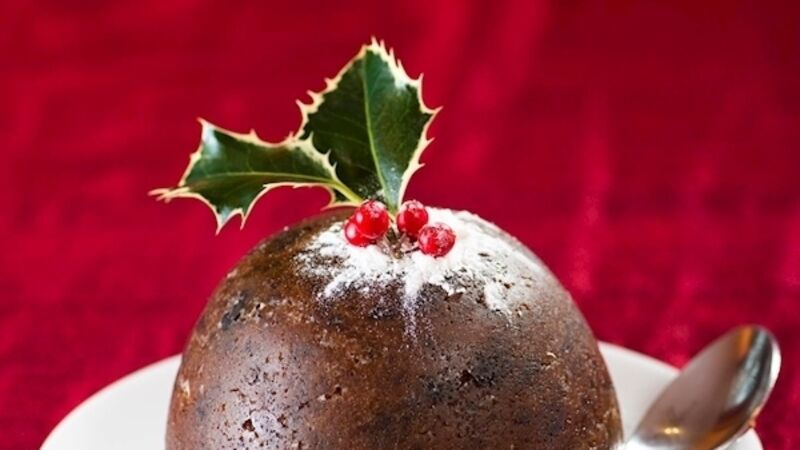Debunking all the myths about plum pudding

How much of what we think we know about Christmas pudding is actually true? explodes the myths about our festive treat

–
1. Originally a starter
It’s frequently claimed that the origins of plum pudding lie in plum pottage, a savoury, medieval concoction made from oats, beans, and scraps of meat and fish, served at the start of the meal. Food historian Sam Bilton states that it “was almost unrecognisable from modern Christmas pudding”, but stops short of drawing the logical conclusion that it was something completely different, more like a thick soup that was eaten not just at Christmas but throughout the year, especially at harvest.
2. Must have 13 ingredients

The Catholic Church at some unspecified time is supposed to have decreed that all puddings must contain 13 ingredients, to represent Christ and the 12 Apostles. It’s never quite agreed what these items should be but they might include: flour, breadcrumbs, spices, beef kidney suet, eggs, dried fruit, apples, almonds, candied peel, brandy, sugar, lemon/orange juice and treacle.
However, there’s absolutely no evidence to back up this superstition. Nowadays, more than ever before, people are creative and put as many ingredients as they wish into a plum pudding — apart from plums, that would never do! Victorians used the word plum to mean a raisin or currant.
3. Cromwell banned plum pudding
Oliver Cromwell is supposed to have made eating plum pudding illegal in Britain and Ireland. Webmaster Mark Vaesen goes further, contending that: “The law has never been rescinded.” It’s true that the Puritans passed anti-Christmas laws, but instead of banning particular foods, they concentrated on stopping special Christmas church services, and keeping shops open. Only when Christmas Day fell on a national fast day, as it did in 1644, was eating plum pudding technically illegal. But people shouldn’t have been eating at all: plum puddings were never singled out. The myth perhaps originated from a satirical pamphlet being taken at face value.
4. ‘Georgie Porgie pudding and pie’

King George I (1714-27) has gone down in history as ‘the Pudding King’, apparently after he requested plum pudding be served as part of the royal feast during his first Christmas in England in 1714. One writer even guesses the exact time the new king first tasted the dish: 6pm on December 25, 1714. It’s been claimed that George was responsible for making it a Christmas dish in Britain and Ireland. To be sure, it was about this time when John Nott published a recipe for plum pudding (The Cook’s and Confectioner’s Dictionary, 1723) but we don’t know whether it was used to make a pudding for the King.
The story of the Pudding King surfaces only in May Byron’s Pudding Book but unfortunately she does not reveal her sources.
The legend lives on all the same. Lining the shelves of Fortnum & Mason this very Christmas are ‘King George Christmas Puddings’, laced with Cognac and “full-strength” navy rum.
5. Written into scripture
“Stir up, we beseech thee”, and be “plenteously rewarded [with] the fruit of good works”, states The English Book of Common Prayer (1549).
Some believe this was read in Church on the last Sunday before Advent to remind people to start preparing their plum puddings. Well, possibly. But isn’t it more likely that “stir up” means get busy and do something worthwhile?
‘Stir-up Sunday’ was going strong by Victorian times, when some families — the ones who could afford stoves — apparently stirred the pudding in turn from east to west, in honour of the route taken by the Three Wise Men to see baby Jesus. Consiglio Murphy, who grew up in Youghal during the 1920s, confirms that their pudding was made about six weeks before Christmas.
All the family gave a stir so that nobody would die within the year!
Many people today consider six weeks too short a time for the pudding to properly mature, and prefer to make theirs around Easter – feeding it weekly with brandy. Spare a thought for Bridget Haggerty, who grew up in Ireland during the austere 1950s, and recalls how some years her family could not afford to make a pudding, and had to fall back on “a commercially made travesty that came in a tin”.
6. Putting coins in puddings is illegal

It’s sometimes maintained that health and safety regulations have banned the tradition of hiding silver coins, rings and wishbones in puddings because of the risk of choking. Eileen Coghlan tells the tale of a man who accidentally swallowed a sixpence he found in a pudding. Twenty-seven years later, when it began to “jump about inside him”, he had to have a “serious operation” to remove the intruder (Irish Press, 17 Dec, 1964).
Today the practice has petered out but not because of the Food Safety Authority, which, thankfully, only lays down laws for the workplace, not the home. We are at liberty to put in as many trinkets as we wish. Just remember to boil them first! Oh, and don’t place the pudding in the microwave!










